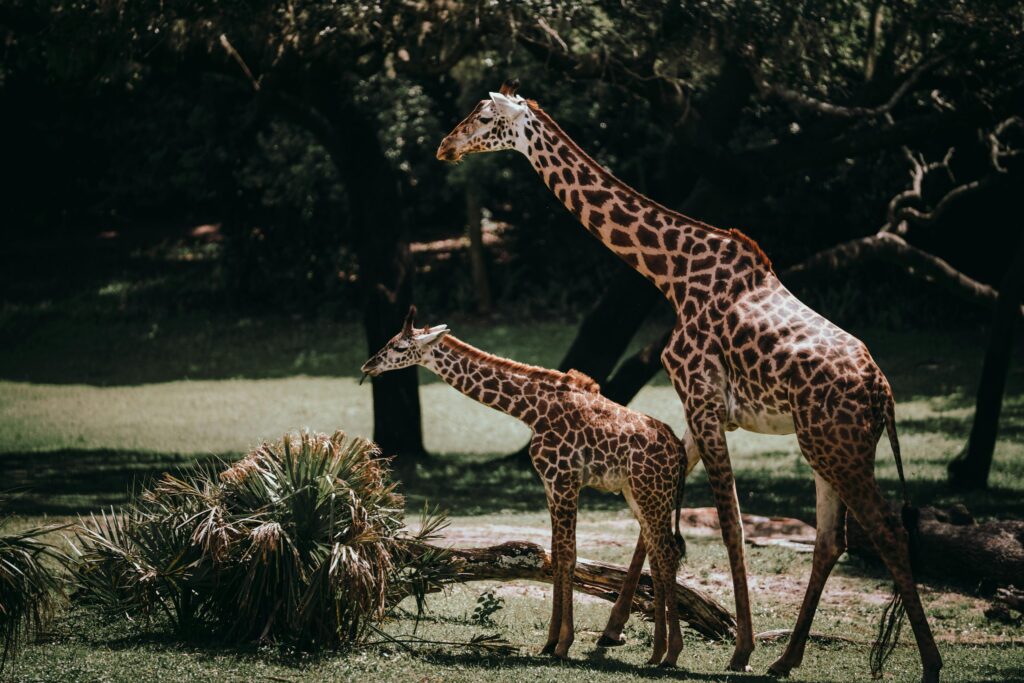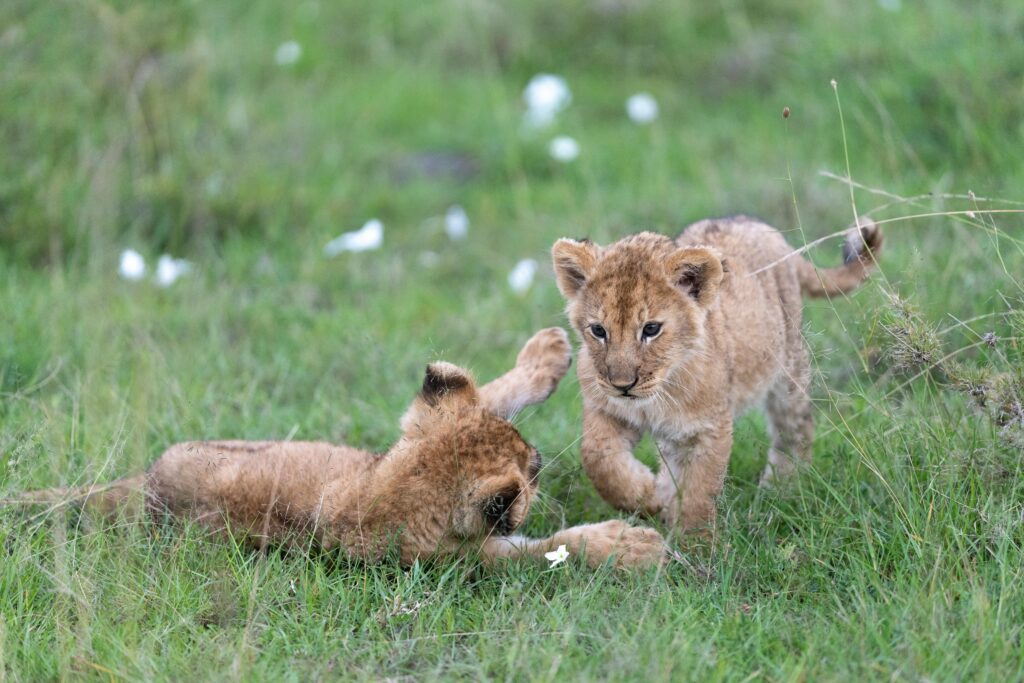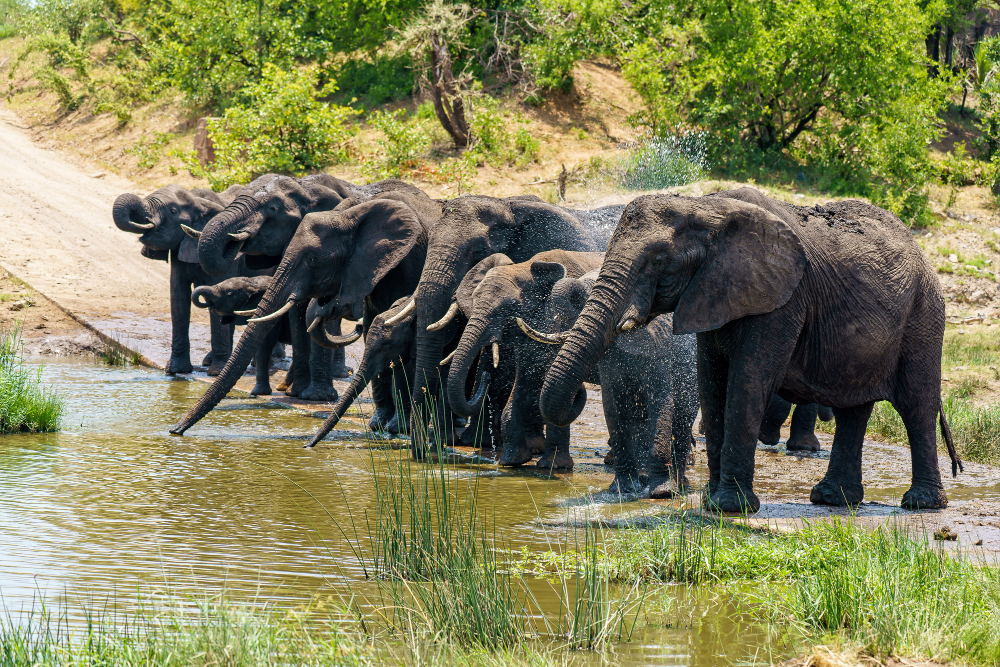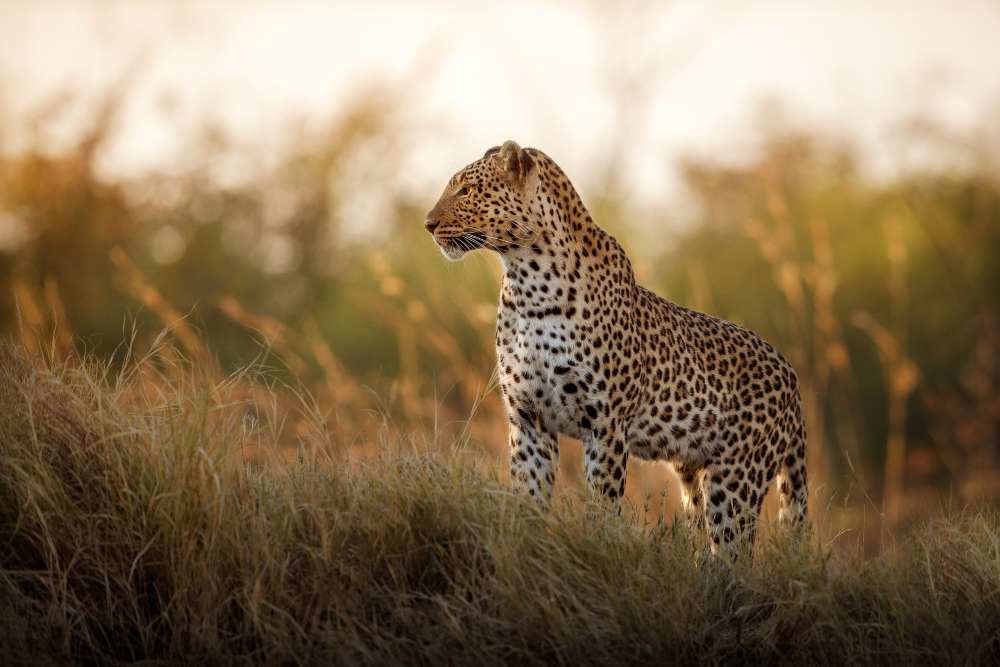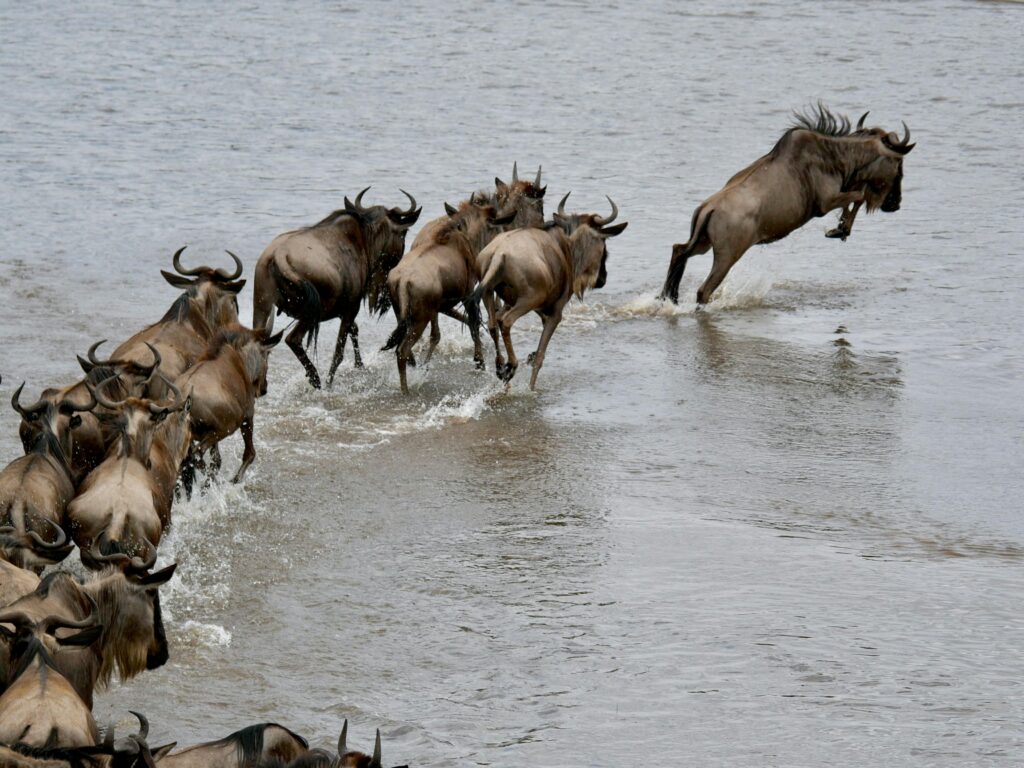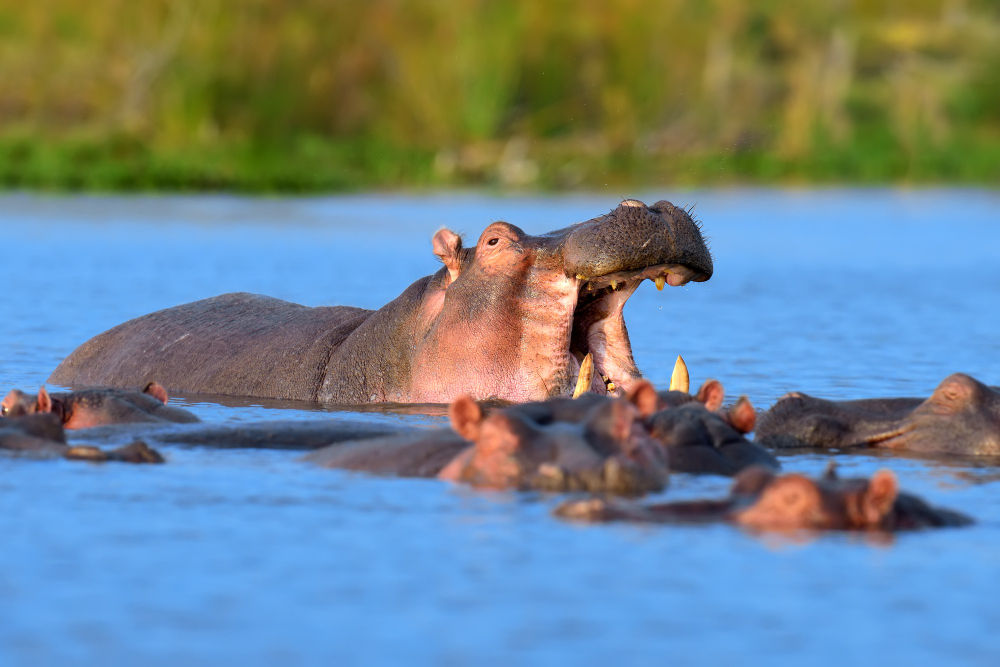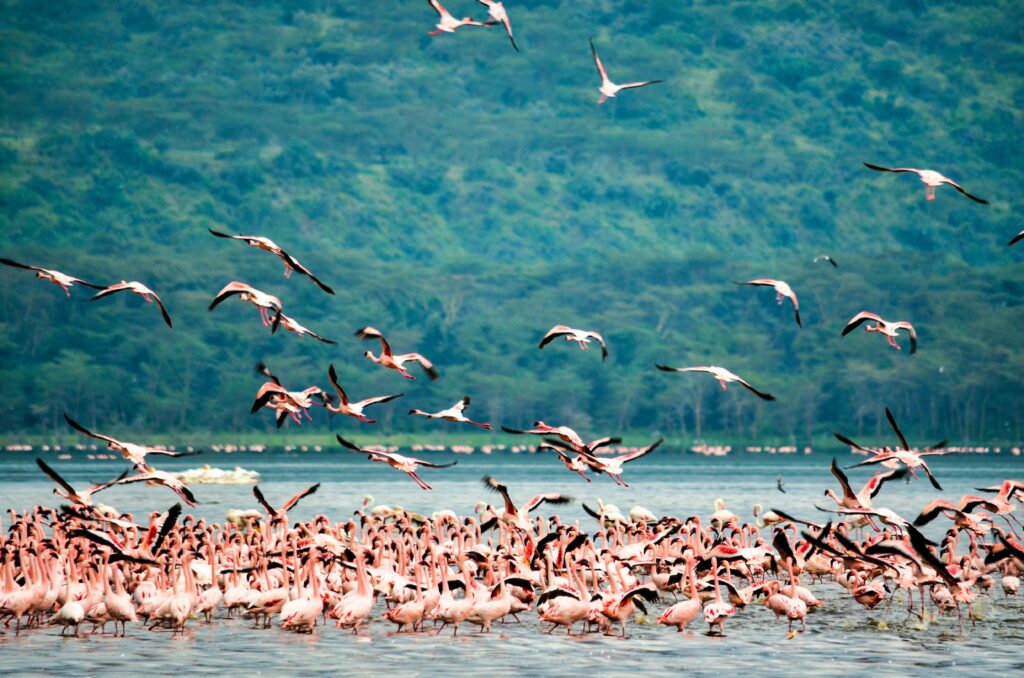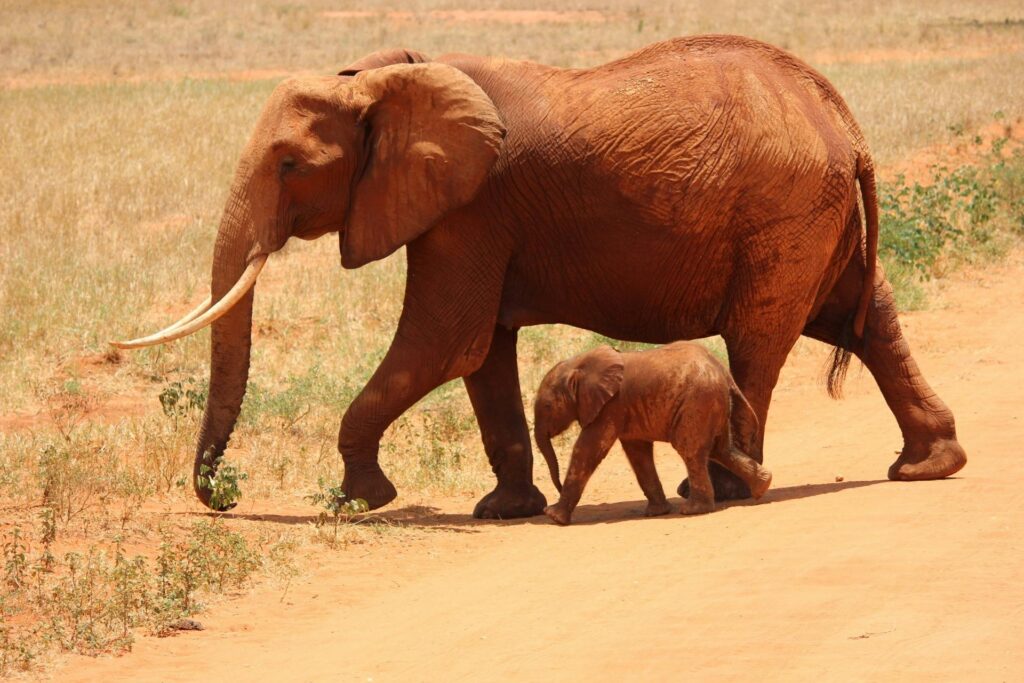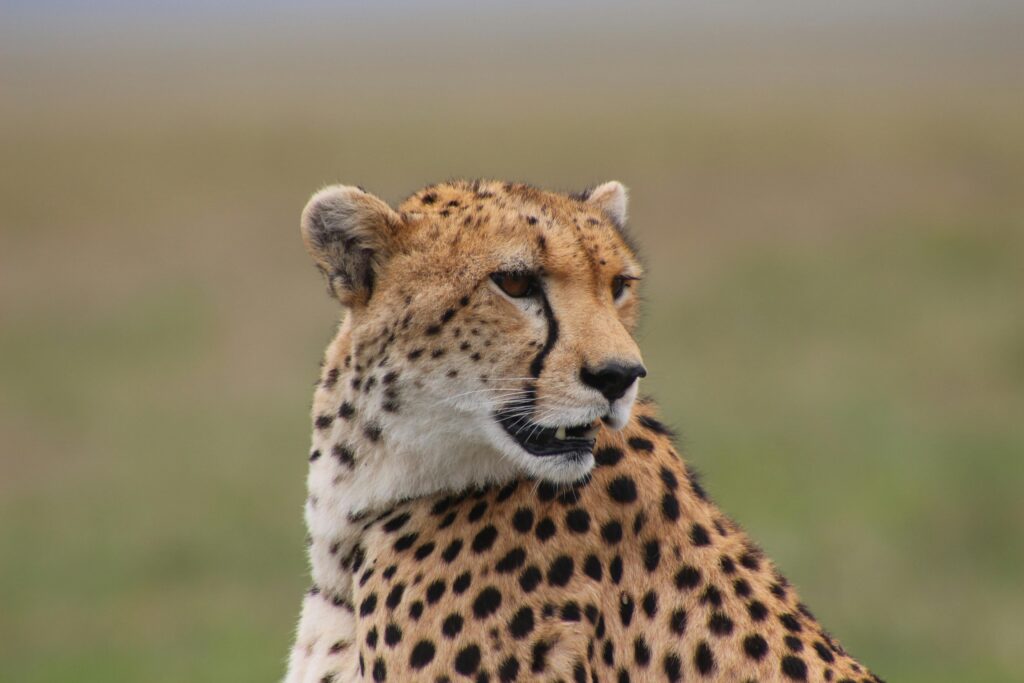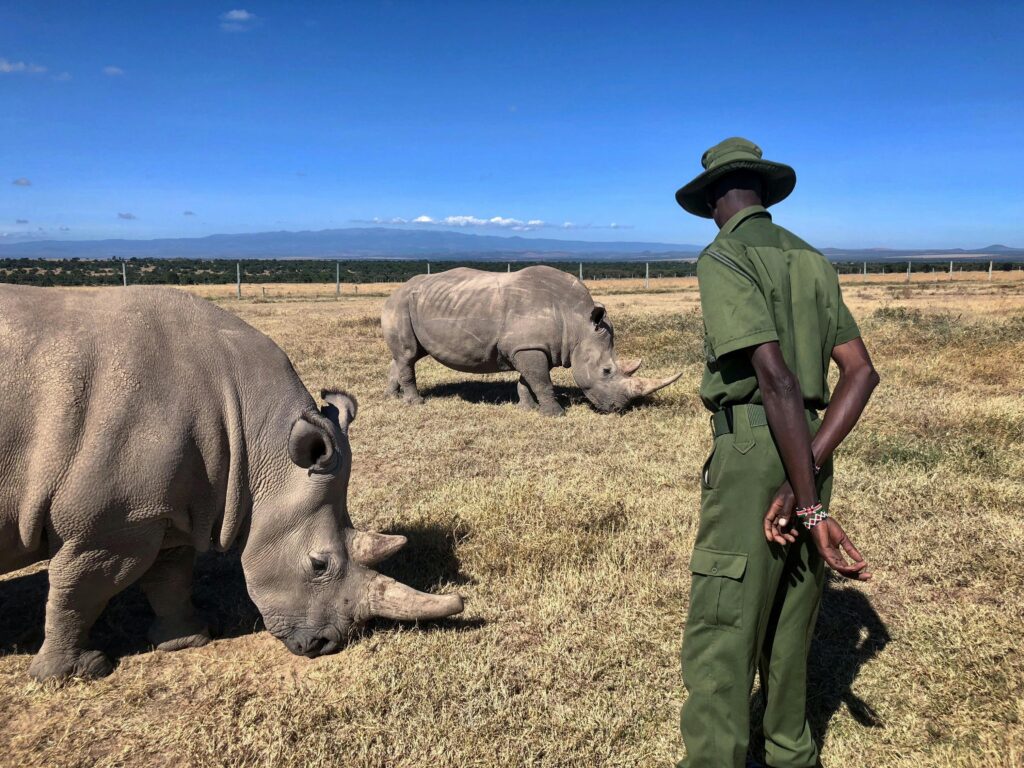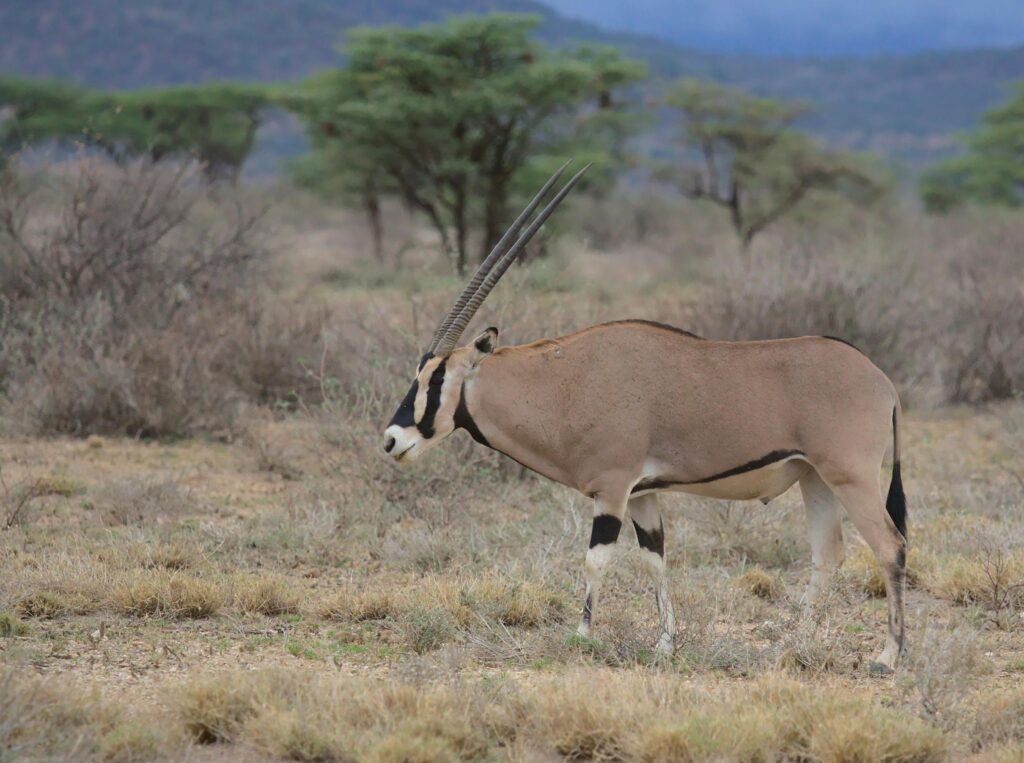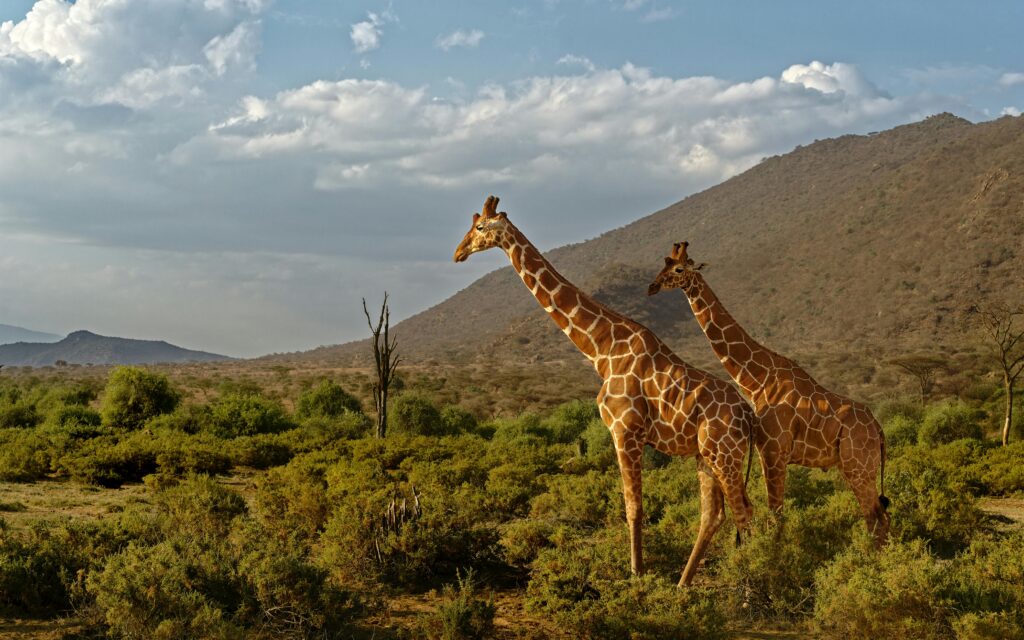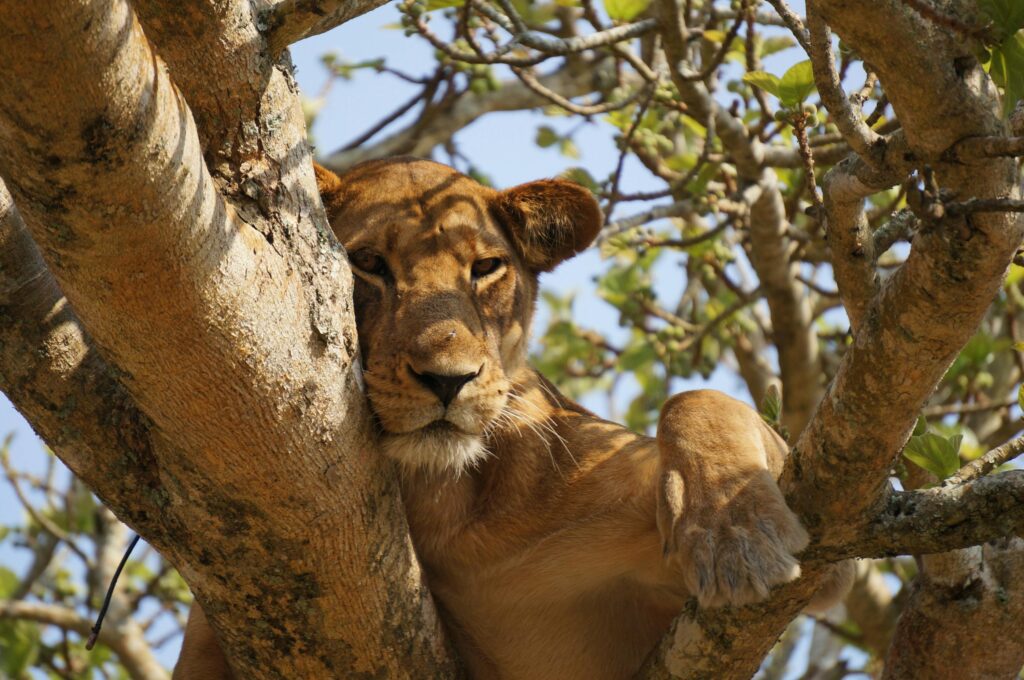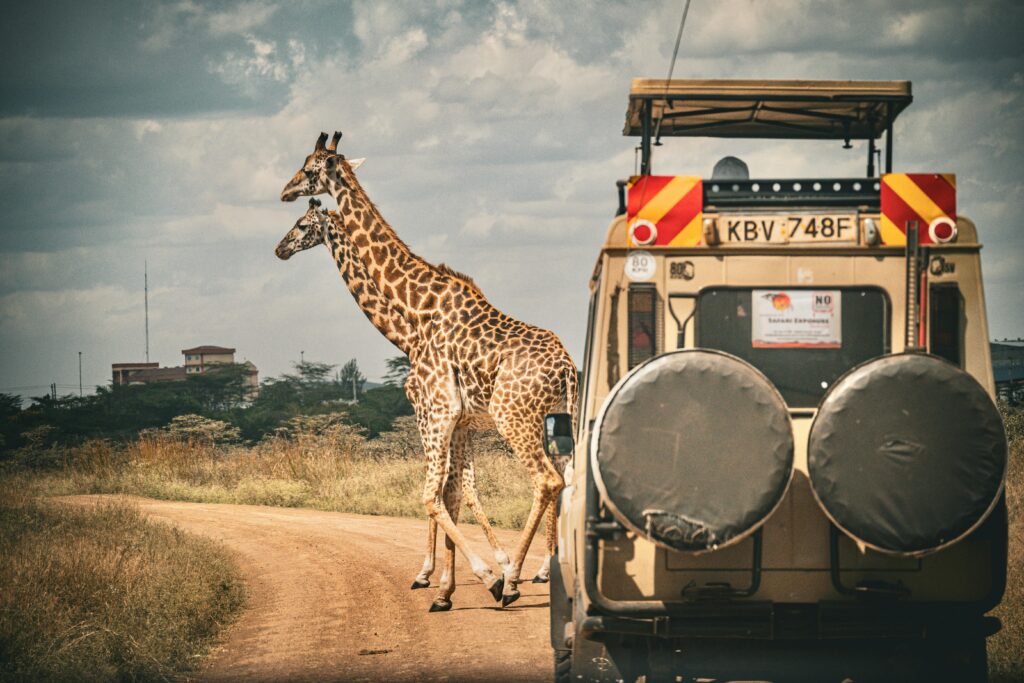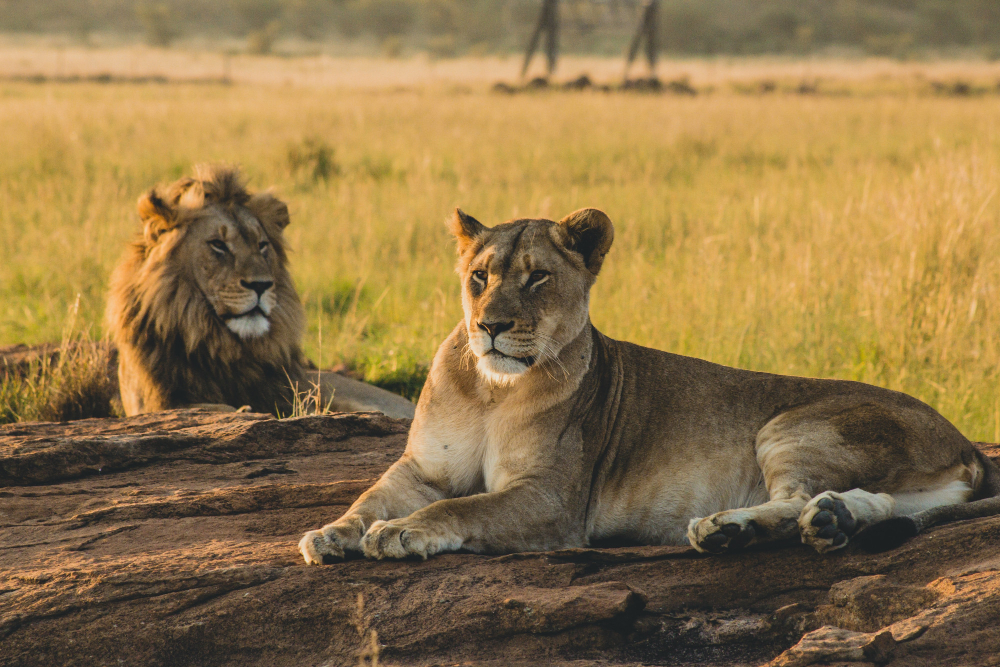Perfect 5 Day Kenya Safari Itinerary & Costs (6 unique Itineraries)
Kenya is home to numerous national parks and reserves, each with unique features. While Amboseli is home to among of the world’s largest herds of African elephants, the Maasai Mara is known for its high concentration of big cats.
You might be thinking if a five-day safari is sufficient because there is so much to see. Although a 7–10 day Kenya safari itinerary is easily arranged, a 5-day safari is plenty to explore some of the country’s main attractions. There will be numerous chances for you to see some amazing animals during five days.
Six different 5 Day Kenya Safari Itineraries
With the aim of viewing as much wildlife as possible, these itineraries have been created to help you make the most of your safari time. Instead than crossing places off a list, they concentrate on thoroughly touring two or three different parks.
Since Kenya’s parks are so dispersed, a five-day safari cannot cover them all. I would suggest a 7–10 day program if you wish to visit four or more parks.
Option 1:
5 Day Kenya Highlights Safari Itinerary
The Maasai Mara National Reserve and Amboseli National Park are my two favorite safari destinations in Kenya. You can see all five of the Big Five (elephants, lions, rhinos, leopards, and buffalos) at both of these amazing wildlife viewing locations!
You can witness the most animals by going to these two parks. However, there is a day of long travel between the two in the middle of this schedule because of their significant distance from one another. Flying between the two is always a possibility if you find this drive to be too taxing.
Day By Day Breakdown for Kenya Highlights Safari Itinerary
Day 1: Masai Mara National Reserve
You will travel west into Kenya’s countryside this morning after departing from the bustling metropolis of Nairobi. In order to get to the Mara Mara in time for lunch, I would advise leaving early, at around 7 or 8 a.m.
You will get the chance to pause at the Rift Valley Viewpoint during your six-hour trip to the Masai Mara, where you can take in expansive views of the well-known Great Rift Valley, which extends from Jordan to Mozambique.
The town of Narok, the final big town before the Masai Mara, will be your second stop.
Before embarking on your first game drive of the trip, you will enjoy a delicious hot lunch at your lodge in the Masai Mara.
Day 2: Masai Mara National Reserve
In order to leave for your safari as early as possible, get up early. I suggest bringing a picnic meal that you can eat inside the reserve as you should ideally arrive at the entrance at six in the morning.
In order for the lodge to prepare your picnic breakfast and lunch and for your guide to be prepared to leave on time in the morning, you will need to inform them in advance of your plans. The day before, before the kitchen shuts down for the evening, let them know.
Since large cats are most active in the morning, you have the best chance of finding them if you get to the reserve early. You are most likely to see a hunt during this time of day.
At some time during the morning, you will be able to eat your picnic meal in a picturesque location within the reserve.
Your safari will start, and it can go on for as long as you like. I strongly advise going on a full-day game drive if you have the stamina and getting back to your lodge just before the gate closes at 6 p.m.
You can, however, return to your lodge in the afternoon and have a nice meal there if you’d prefer to pace yourself.
Having two safaris separated by lunch at your resort is not something I would advise because you would have to pay each time you enter the park, which will quadruple your daily expenses.
Day 3: Masai Mara to Amboseli National Park
No later than eight in the morning, depart from your Masai Mara lodge.
You should plan enough time for delays, whether they are caused by heavy traffic or enjoying a leisurely picnic lunch, as the drive ahead of you will take about nine hours, not including any stop-offs. Additionally, you should refrain from driving after dark because it is far less hazardous to do so than during the day; departing by 8 a.m. lessens the chance of this happening.
Around 5:00 p.m., you should arrive in Amboseli.
Day 4: Amboseli
No later than 6:30 a.m., enter the park. This is significant because Amboseli’s elephant herds go from the forests beneath Mount Kilimanjaro to the marsh in the middle of the national park between 6:30 and 7 in the morning. Since they essentially encircle you as they cross the road, it is absolutely amazing to watch them embark on this adventure.
Since the elephants spend the majority of the day relaxing in the swamp, you will need to see them early in the morning or late at night when they depart the swamp if you want to see them up close and in action.
Amboseli’s two famous giants can be seen in some breathtaking photos when the elephants pass in front of Kilimanjaro during their daily migration.
Following some time spent admiring Amboseli’s elephants, you will proceed with your game drive inside the park.
Amboseli functions by issuing a 24-hour pass, which allows you to enter and exit the park as often as you’d like during that time. As a result, you have the choice of returning to your lodge for a hot lunch or having a picnic in the park.
You can easily return to your lodge for a nice meal because Amboseli is a rather small park.
Your tour guide will drive you to Observation Hill, a picnic area perched on a hill with expansive views of Amboseli National Park, if you choose to stay for a picnic lunch.
Another great time to go on a game drive in Amboseli is in the late afternoon or evening. You may see the large herds of elephants moving over the road as they make their way back to the jungles behind Kilimanjaro at approximately 5:00 p.m.
When the park closes at 6 p.m., depart Amboseli and return to your accommodation for dinner.
Day 5: Amboseli to Nairobi
Depending on traffic, it takes four to five hours to get from Amboseli to Nairobi. In order to return to Nairobi in time for lunch, I would advise leaving no later than 8 a.m.
Traveling on smooth tarred roads is part of the drive to Nairobi. Since the route is primarily a single carriageway, traffic can easily accumulate. You have a better chance of avoiding traffic if you travel earlier in the day.
When you get in Nairobi, you can eat lunch at one of the local eateries. There are several amazing eateries in Nairobi. The Talisman Restaurant in Karen, which offers sushi and other Asian-inspired fare, is my all-time favorite.
Option 2:
5 Day Western Circuit Highlights Itinerary
The eastern, northern, and western circuits are the three divisions of Kenya’s safari attractions. If you wanted to reduce the amount of time you spent driving, choosing a circuit would be better than the five-day Kenya Highlights Safari option mentioned above.
The Masai Mara, Lake Naivasha, and Lake Nakuru comprise the eastern circuit. Because it doesn’t include a lot of driving and contains Kenya’s flagship park, it’s possibly the most popular 5-day itinerary.
Along with spending a night in Lake Naivasha and another in Lake Nakuru, this itinerary allows you to spend two nights in the Masai Mara.
You may be able to see all five of the Big Five if you visit these three parks together.
Day 1: Masai Mara National Reserve
You will travel to the Masai Mara from Nairobi early in the morning, preferably between 7 and 8 a.m. There will be a few stops along the way, such as the Rift Valley Viewpoint, to break up the about six-hour drive.
Around 2:00 pm, you should reach your Masai Mara resort in time for a hearty meal.
After that, you have two afternoon alternatives. Within the reserve, you can take a game drive in the afternoon. One of the finest times to try to see predators in action is in the late afternoon. I would advise remaining in the reserve till 6 p.m.
An alternative is to go to a nearby Maasai tribe and discover more about their way of life.
If you’re on a limited budget, seeing the Maasai tribe would be the most economical choice because you have to pay an entrance fee each time you enter the Masai Mara.
After that, you can have dinner in your lodge.
Day 2: Masai Mara National Reserve
Get the day off to a bright start. You should begin your safari early enough to be at the reserve’s gate by six in the morning. You have a better chance of witnessing the Masai Mara’s predators in action if you get there early.
You will be going on a safari for the entire day today. Because of this, you should make plans with your guide and book your accommodations the night before so that you can have a picnic breakfast and lunch for your safari.
You can spend as much time as you like on safari. If you’re feeling exhausted, you can go early, but I’d advise sticking until the gates close at 6 p.m.
After that, your lodge will serve you a delicious, hot meal.
Day 3: Lake Naivasha
Try to leave your resort close to the Masai Mara at about eight in the morning.
You should reach Lake Naivasha in time for lunch after traveling for about five hours. Lunch can be eaten in a picnic area or at your lodge.
You can take a boat to the lake for the afternoon. This is a fantastic chance to get up close and personal with a variety of birds and hippos.
On Crescent Island, which is inside the lake, you can choose to go on a walking safari. Numerous herbivores, including as giraffes, gazelles, and zebras, can be seen here.
Day 4: Lake Nakuru
To get to Lake Nakuru by mid-morning, leave Lake Naivasha at about 8 a.m.
After that, you can have a picnic lunch and go on a walking safari at Lake Nakuru National Park.
Take a game drive in Lake Nakuru National Park for the afternoon. This is a fantastic chance to try to see the protected black and white rhinos, the park’s most well-known inhabitants.
After that, you’ll eat dinner in your lodge.
Day 5: Lake Nakuru to Nairobi
In order to get to Nairobi in time for lunch, depart Lake Nakuru at around nine or ten in the morning.
The city is home to some excellent dining establishments. My favorite restaurant, Talisman Restaurant, is located in the Karen area. It offers Asian-inspired food and has one of the city’s best reviews.
You are free to do whatever you want with your time in Nairobi this afternoon. Maybe it would be going on a final safari in Nairobi National Park or spending a few hours with the giraffes at The Giraffe Centre.
Option 3:
5 Day Eastern Circuit Highlights
You can visit the top national parks in the southwest region of Kenya by following the Western Circuit.
Your first destination will be Amboseli National Park, which is well-known for its enormous elephant population.
After that, you’ll travel to Tsavo West National Park, which is a portion of Tsavo, Kenya’s largest national park. Black rhinos can be seen in this park, which is well-known for its hilly terrain.
The journey concludes in Nairobi.
Day 1: Amboseli National Park
At about 8 a.m., depart Nairobi. You are less likely to be stuck in traffic the earlier you depart.
Although this time may vary according on traffic, the trip should take about five hours. Since a large portion of the route is on a single-lane highway, the traffic on the road will greatly affect how long it takes you to get there.
Around midday is when you should get to Amboseli. I would suggest stopping by your resort for a cooked lunch.
You will take your first game drive in the afternoon. Don’t leave the national park until it shuts at 6 p.m. This is due to the fact that the big herds of elephants are moving around 5 p.m. and crossing the park’s road to head for the jungles beneath Mount Kilimanjaro. One of the greatest times to see elephants is at this period.
Return to your lodge for dinner after your game drive.
Day 2: Amboseli National Park
Get up early because the park gates open at 6am, which is when your game drive will begin. You have the best chance of seeing the elephants pass over to the marsh if you get in early.
After that, you’ll stroll about the park, watching for the diverse residents of Amboseli.
The only place in the park where you can leave your car is Observation Hill, where you will stop for lunch. At the summit of the hill, where you will get stunning unobstructed views of Amboseli National Park, you can have a picnic lunch.
Amboseli problems The park offers 24-hour passes, so your safari will end at approximately 3 p.m., the same time you arrived the day before.
After that, you can unwind at your lodge for the remainder of the afternoon.
Day 3: Tsavo West National Park
I advise leaving early because the travel to Tsavo West takes about four hours. You can get to Tsavo West for lunch if you leave Amboseli at 8 a.m.
You can have a delicious lunch at your resort in Tsavo West or have a picnic in a picturesque location.
You will do a game drive in the national park in the afternoon after lunch.
Day 4: Tsavo West National Park
You will embark on a full-day safari within the national park this morning. I advise going to the park when it opens at six in the morning.
After that, you’ll spend the morning looking for the various wildlife that inhabit Tsavo West.
Given the immensity of Tsavo West, I would advise having a picnic lunch halfway through your safari rather than going back to your accommodation for lunch. You can travel farther into the park as a result.
Because Tsavo West offers 24-hour tickets, you will depart the national park early in the afternoon, allowing you to relax at your lodge.
Day 5: Tsavo West to Nairobi
You will leave Tsavo West this morning and return to Nairobi. In order to return to Nairobi in time for lunch, I would advise departing at 7 or 7:30 a.m.
You may enjoy a variety of delectable restaurants in Nairobi. The Talisman Restaurant in Karen is my particular favorite. It has a beautiful location and provides a variety of cuisine with Asian influences.
The afternoon is yours to spend anyway you like. This could be exploring or just unwinding. A trip to the Giraffe Center or even an afternoon safari in Nairobi National Park are excellent choices if you decide to explore.
Option 4:
5 Day Northern Circuit Highlights
Kenya’s northern region differs greatly from the rest of the nation. Numerous uncommon animal species, including the Grevy zebra, Somali ostrich, Reticulated giraffe, Gerenuk, and Beisa oryx, can be found here.
Although it isn’t nearly as well-known as the Eastern and Western Circuits, I think the Northern Circuit is incredibly underappreciated. Its lack of popularity is a huge benefit because it implies that the parks and reserves you visit won’t be as crowded.
The largest black rhino reserve in the world, Ol Pejeta Conservancy, is visited via Kenya’s Northern Circuit. The two surviving northern white rhinos in the world are also found in this sanctuary.
The Special Five mentioned above reside in Samburu National Reserve, which is the next stop on this five-day itinerary. Along with more than 350 different species of birds, the area is home to all three of the big cats—lions, leopards, and cheetahs.
After that, you’ll go to Lake Nakuru, which is among the greatest locations to see both black and white rhinos.
Finally, you’ll go to Lake Naivasha, which is a fantastic location to get a close-up look at hippos.
Day 1: Ol Pejeta Conservancy
You will depart Nairobi today and travel to Ol Pejeta Conservancy, which is located in the foothills of Mount Kenya around 4.5 hours north of Nairobi.
In order to get to Ol Pejeta in time for a hot lunch at your lodge, I would advise departing Nairobi at around 8 a.m.
You will take a game drive in the Ol Pejeta Conservancy after lunch. One of the greatest locations on Earth to see both black and white rhinos is here. Here, you can also anticipate seeing giraffes and elephants. The final northern white rhinos can be found in the endangered species enclosure, therefore ask to drive through it.
A safari that involves walking or horseback riding is an alternative.
Day 2: Ol Pejeta Conservancy & Samburu National Reserve
Either a morning wildlife drive, a horseback safari, a visit to the chimpanzee sanctuary, or a lion tracking trip with one of Ol Pejeta’s rangers will occupy your morning. This is all up to your individual taste.
After that, you’ll have lunch in Ol Pejeta before continuing on to your next stop.
From Ol Pejeta, it takes about three hours to drive north to Samburu National Reserve.
Late afternoon is when you will reach Samburu National Reserve. After that, you will spend the evening unwinding at your lodge.
Day 3: Samburu National Reserve
The reserve opens at 6am, so get up early to leave for your safari.
Since your Samburu entry permit is good for multiple entries and is valid for 24 hours, you might like to have a hot lunch at your lodge before heading out on a wildlife drive in the afternoon.
As an alternative, you could want to pack a picnic lunch that you can eat at a picturesque location in the park. In order to maximize your safari time, I highly suggest this option.
Go on your safari until nightfall. I advise completing your game drive right before the gate closes, as the reserve closes at 6 p.m.
Day 4: Lake Nakuru
You’re going to leave Samburu this morning. In order to reach Lake Nakuru in time for lunch, I would advise departing between 7 and 8 a.m. You can eat a picnic at a lovely location or a heated meal at your resort.
You will take a game drive in Lake Nakuru National Park following lunch. In this park, you can anticipate seeing buffalos, zebras, giraffes, and white rhinos. Although they are less frequent, lions and leopards are also found.
You will eat dinner at your lodge following your game drive.
Day 5: Lake Naivasha and Nairobi
You will go to neighboring Lake Naivasha this morning after leaving Lake Nakuru National Park. It takes about two hours to drive there.
In order to reach Lake Naivasha by mid-morning, I advise leaving at around 8 a.m.
After arriving at Lake Naivasha, you can take a boat safari around the lake. You’ll see a range of bird species and get a close-up look at hippos.
Crescend Island is an island inside the lake. On the island, you will be able to moor here and embark on a walking safari.
Before returning to Nairobi, eat lunch on the shores of Lake Naivasha. The travel to Nairobi takes about two hours. It should be mid-afternoon when you get there.
Option 5:
Ultimate 5 Day Masai Mara Safari Itinerary
You can’t go wrong with the Masai Mara if you want to spend your five days in Kenya in a single safari spot. You could easily stay here for a few weeks because the reserve is so big.
The finest spot to witness Kenya’s big cats is the Masai Mara. It also has a robust population of zebras, giraffes, elephants, and many more animals. You might even be fortunate enough to see a black rhino here.
Since you will be spending four nights in the same place, this plan involves the least amount of driving.
Reducing the amount of time spent traveling allows you to spend more time on game drives, which raises the likelihood of seeing animals.
Day 1: Masai Mara National Reserve or Maasai Village
You will leave Nairobi this morning and travel west to the Masai Mara. In order to reach your resort in time for a hot meal, I would advise departing at around 8 a.m.
You will have the chance to make stops at the Rift Valley viewpoint and Narok town, the final significant settlement before the Masai Mara, during the six-hour trip.
lunch at your lodge at 2:00 p.m.
You have the option of visiting a nearby Maasai community or going on an afternoon game drive this afternoon.
I would advise remaining outside until the park closes at 6 p.m. if you decide to go on the game drive. Because it’s cooler in the late afternoon, this is an excellent time of day to see predators in motion.
As an alternative, you can learn about the Maasai tribe and their culture by going to a local Maasai boma. When you visit the tribe, you will usually see traditional dance and music, have a tour of the Boma, and see a Maasai home.
Day 2-4: Masai Mara Full-Day Game Drives
You might choose to take full-day game drives throughout these three days in order to make the most of your trip to the Masai Mara National Reserve.
Since the Masa Mara’s predators are most active at sunrise, you have a better chance of seeing them in action if you visit the reserve at that time.
You’ll need to pack a picnic breakfast for these early safari departures. All you have to do is let your guide know the night before so they can let the lodge know.
A picnic lunch is also necessary if you intend to spend the entire day in the area.
After your evening wildlife drive, return to your lodge for a nice, well-earned dinner.
Day 5: Back to Nairobi
You have the chance to take things easy today. After a leisurely breakfast, you are free to depart from your lodge whenever you choose.
An alternative is to schedule your departure from your lodge for 8 a.m. so that you can reach Nairobi in time for lunch.
You will have time to explore Nairobi if you choose to depart early and spend the day there.
Visiting The Giraffe Centre, where you may feed some of the giraffes that live there by hand, is one of my favorite things to do. It simply takes an hour or two to visit.
Costs
Out of all the possibilities, this itinerary is the most costly. You should budget $360 per person per day for two persons.
The Masai Mara park fees, which are $100 + 18% tax per person per entry from January to June and $200 + 18% tax per person per entry from July to December, account for the majority of the expenses.
The cost will vary based on the number of persons sharing the safari truck and the level of lodging selected, and it is assumed that you are dealing with a small local safari firm.
Option 6:
5 Day Safari & Beach Itinerary
There will be time spent on safari and on one of Kenya’s top beaches during this five-day excursion. It’s ideal for people who prefer to spend some time relaxing in paradise after their trip.
Amboseli National Park, maybe Kenya’s best national park, is the first stop on the itinerary. Huge elephant herds and, if you’re lucky, breathtaking vistas of Kilimanjaro can be seen here.
After that, you’ll travel to Tsavo West National Park, which is home to the Big Five: rhinos, lions, leopards, and elephants.
Lastly, you will go to Diani Beach, which is sometimes called the nicest beach in Kenya. Snorkeling is excellent in the pristine seas.
Day 1: Amboseli National Park
Around 8 a.m., you will leave Nairobi and travel to Amboseli National Park. Depending on how congested the roads are, the estimated 5-hour drive time may vary. Traffic congestion are prevalent because the major highway linking the two locations is only one carriageway.
When you reach Amboseli National Park, you’ll have time to eat lunch at your lodge.
Following lunch, you will do a game drive in the park in the afternoon. Elephants in Amboseli begin their journey from the park’s center to the forests beneath Kilimanjaro at approximately 5 p.m., making this a fantastic time of day to go on safari. It will be a wonderful experience to see them cross the street.
Day 2: Amboseli National Park & Tsavo West National Park
Take a game drive in Amboseli National Park early in the morning. Try to get through the park gates between 6 and 6:30 in the morning. After that, you’ll arrive in time to see the elephants travel to the swaps in the middle of the park.
After then, your safari will continue as you search for further residents of Amboseli. Among the many creatures you may expect to see are gazelles, baboons, zebras, and giraffes.
Savor a picnic at Observation Hill, where you can sit and take in expansive park views.
After that, you will travel four hours east from Amboseli National Park to Tsavo West National Park.
By late afternoon, you will reach your lodge in Tsavo West, just in time for a hearty meal.
Day 3: Tsavo West National Park
For your full-day game drive, leave early. When the gate opens at 6 a.m., I would advise going inside the park.
To make the most of your time on safari, pack a picnic for breakfast and lunch. All you have to do is inform your guide the night before so they can make the necessary arrangements with your lodging.
Throughout the day, you will stroll about the park, keeping an eye out for the locals of Tsavo.
When the park gates close at 6 p.m., your game drive should be over.
After that, you’ll head back to your lodge for dinner.
Day 4: Diani Beach
Leave your Tsavo West lodge between 7 and 8 a.m. You can go to Diani around lunchtime thanks to this.
Depending on traffic, the travel takes about six hours, though this can change. This is one of the reasons I advise leaving early in order to avoid the lines.
Once at Diani, you can enjoy a leisurely supper at one of the many eateries along the shore. One of the best-rated eateries along this section of the shore is Nomad Beach Bar & Restaurant.
After that, you can relax for the afternoon. You may snorkel on several of the coral reefs. Nomad Beach, located in front of Nomad Beach Bar, is the greatest beach.
As an alternative, you could just want to unwind on the beach and have a leisurely dip in the sea.
Day 5: Back to Nairobi
You must depart Diani early in the morning, at around 7 a.m., if you plan to drive to Nairobi. Since the majority of the trip is on a single-lane highway that is quite popular with big cargo trucks leaving from Mombasa seaport, the driving duration is significantly impacted by how congested the roads are.
You have the chance to avoid part of the traffic by leaving early. Additionally, it makes it more likely that you will reach Nairobi before nightfall. If at all feasible, I would advise against driving at night.
Flying back to Nairobi would be the more effective course of action. Ukunda Airport is an airport located just outside of Diani. There are direct flights from Ukunda Airport to Wilson Airport and Jomo Kenyatta International Airport, the two airports in Nairobi.
Flights cost between $45 and $70 per person and take slightly over an hour.
Since there are numerous flights every day, you might choose to take an afternoon jet and spend the morning in Diani, or you could take a morning flight and then visit Nairobi.
Cost
Assuming you drive between Diani and Nairobi, the starting price for this itinerary for two people is about $300 per person per day. If you want to fly back to Nairobi, the price would be more.
The cost will vary based on the number of persons sharing the safari truck and the level of lodging selected, and it is assumed that you are dealing with a small local safari firm.
Is 5 Days Enough in Kenya?
Yes, five days is sufficient to explore some of Kenya’s most breathtaking safari locations and increase your chances of seeing some truly remarkable animals.
Although five days is technically sufficient, if you want to fully immerse yourself in Kenya’s animals and culture, a seven to ten day schedule would be ideal.
Although it is technically feasible to combine Kenya and neighboring Tanzania into a single safari in 5 days, it would be best to have 7–10 days to tour both nations.
Private vs Group Kenya 5 day Safaris
Safaris that are private are the most popular option. Most travelers choose this choice since it allows you to fully customize your itinerary.
You have complete control over your private safari experience, including choosing which lodges to stay at, which parks and reserves to visit, when to depart for game drives and other drives, how long to linger at sightings, and which sightings to prioritize.
All of these issues are resolved with group safaris.
Additionally, you typically receive better cars and more experienced guides on private safaris. You are therefore more likely to have a more satisfying safari trip.
Group safaris involve joining a pre-scheduled tour which has a fixed number of spaces available. You will be traveling with other people, which is great if you are going alone or to meet new people.
Budget camping safaris usually cost between $180 and $250 per person per day, making group safaris less expensive than private safaris. If you are traveling alone, the savings are especially apparent.
How Much Does a 5 day Kenya Safari Itinerary Cost?
In low season (January to June), the cost of a low-cost private safari for two adults starts at $260 per person per day (full board, but without external flights, visas, tips, or alcohol). That works out to $1,300 per person for a five-day safari. This can reach $300 per person per day during peak season.
In low season, the starting price for a mid-range private safari for two adults is about $350 per person per day, or $1,250 for five days. This will increase to $450 per person per day during peak season.
Final Thoughts
Kenya is a great place to go on your first safari. Each of its many national parks and reserves is distinct and brimming with life.
You really can’t go wrong with any of the five-day itineraries above because they include so much to see and do at each site!

